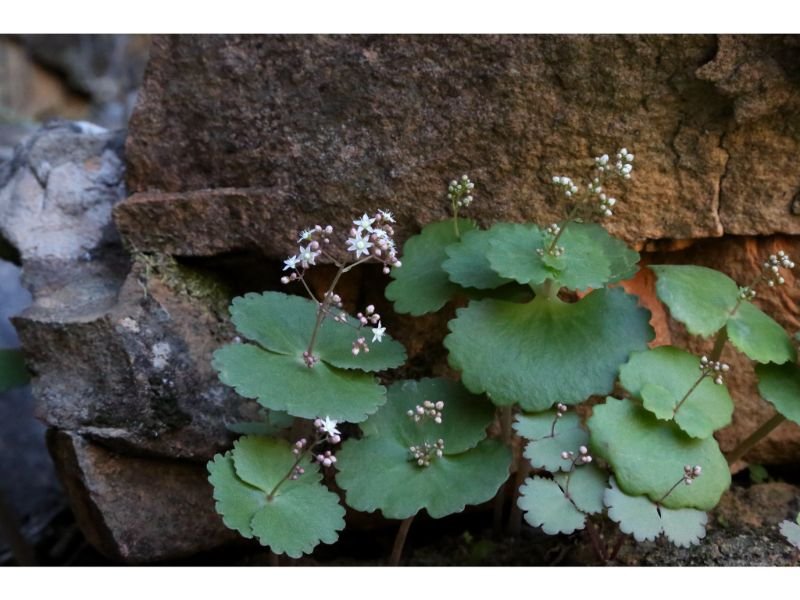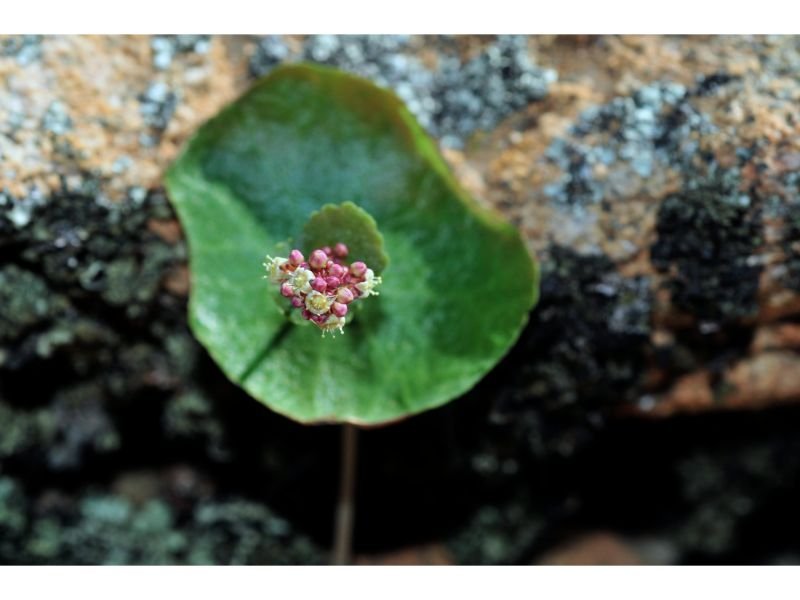Crassula Umbella is a stunning succulent that’s native to South Africa. With its fleshy, green leaves arranged in an umbella shape, it’s no wonder that it’s becoming an increasingly popular houseplant. If you’re thinking about adding a Crassula Umbella to your collection, it’s essential to know how to care for it correctly. In this comprehensive guide, we’ll cover everything you need to know to keep your Crassula Umbella happy and healthy.

Table of Contents
Is it Crassula Umbrella or Crassula Umbella??
There seems to be some confusion regarding the correct spelling of the plant in question. The name of the plant is commonly referred to as both Crassula Umbrella and Crassula Umbella. However, the correct name of the plant is Crassula umbella, with a double “l”.
It is not uncommon for plant names to have variations in the spelling, as they can be influenced by factors such as the plant’s origin and the language used to name it. In this case, the confusion may have arisen due to a typo or misinterpretation of the name.
To ensure accuracy and consistency, it is important to use the correct scientific name when referring to a plant. In this case, Crassula umbella is the correct name for the plant commonly referred to as the Wine Cup.
Care guide for Crassula umbella

Light Requirements
Crassula Umbella thrives in bright, indirect light. In their native habitat, these succulents grow in areas with plenty of sunlight, so it’s essential to provide them with enough light to thrive. However, direct sunlight can be harmful to these plants and can cause sunburn or scorching. If your plant is getting too much direct light, you’ll notice brown spots on the leaves. If this happens, move the plant to a shadier spot.
Watering
Like all succulents, Crassula Umbella is drought-tolerant and prefers well-draining soil. Overwatering is the most common cause of plant death in succulents, so it’s essential to be careful when watering. The soil should be allowed to dry out between waterings, and the plant should never sit in standing water. Water sparingly during the winter months, as the plant is dormant and does not require as much moisture.
Soil Requirements
Crassula Umbella prefers a well-draining soil mix that’s specifically designed for succulents. A blend of regular potting soil, sand, and perlite is ideal. Avoid using heavy soils that retain water, as these can cause root rot and kill the plant.
Temperature and Humidity
Crassula Umbella prefers moderate temperatures between 60-75°F (15-24°C). It can tolerate slightly cooler temperatures during the winter months when the plant is dormant. This succulent is also adaptable to low humidity levels, so it’s not necessary to provide additional humidity.
Fertilization
Crassula Umbella does not require frequent fertilization, but it can benefit from occasional feeding during the growing season. Use a balanced, water-soluble fertilizer and dilute it to half-strength. Fertilize every two weeks during the spring and summer months, and stop fertilizing during the fall and winter.
Propagation
Crassula Umbella is easy to propagate from stem or leaf cuttings. To propagate from stem cuttings, take a cutting that’s at least three inches long and remove the lower leaves. Allow the cutting to dry out for a few days, then place it in well-draining soil. Water sparingly until the cutting has developed roots. To propagate from leaf cuttings, remove a healthy leaf from the plant and place it on top of the soil. The leaf will develop roots and eventually grow into a new plant.
How to grow crassula umbella from seeds?

Growing Crassula Umbella from seeds can be a rewarding and fun experience, but it requires a bit of patience and attention to detail. Here’s a step-by-step guide on how to grow Crassula Umbella from seeds:
- Choose Quality Seeds: Look for high-quality Crassula Umbella seeds from a reputable source. Make sure the seeds are fresh and viable, and avoid seeds that are discolored or damaged.
- Prepare the Soil Mix: Crassula Umbella prefers a well-draining soil mix that’s specifically designed for succulents. Mix equal parts of perlite, coarse sand, and peat moss to create a loose, well-draining soil mix.
- Sow the Seeds: Sow the seeds on top of the soil mix and press them gently into the soil. Do not cover the seeds with soil, as they require light to germinate.
- Water Sparingly: Water the soil gently, ensuring that it’s moist but not waterlogged. Crassula Umbella seeds require a moist environment to germinate, but overwatering can lead to fungal growth and rot.
- Provide Adequate Light: Crassula Umbella seeds require bright, indirect light to germinate. Place the seed tray near a south or west-facing window or under grow lights.
- Maintain the Environment: Keep the soil moist but not waterlogged and maintain a consistent temperature of 70-75°F (21-24°C) during the day and 60-65°F (15-18°C) at night. Avoid exposing the seed tray to direct sunlight or cold drafts.
- Transplant: When the seedlings are large enough to handle, transplant them into individual pots filled with well-draining soil mix. Water sparingly and provide bright, indirect light.
By following these simple steps, you can grow Crassula Umbella from seeds successfully. Remember to choose quality seeds, provide adequate light and moisture, and maintain a consistent temperature and environment. With patience and attention to detail, you can enjoy the unique beauty of the Crassula Umbella in your home or garden.
Why is crassula umbella called ‘wine cup’?
Crassula Umbella is commonly referred to as Wine Cup due to the unique shape of its leaves. The leaves of the plant are arranged in a rosette pattern and are shaped like little cups or goblets. The leaves are also often tinged with a reddish color, similar to the color of the wine. The combination of the cup-like shape of the leaves and their reddish coloration gives the plant its common name, Wine Cup.
In addition to its unique appearance, Crassula Umbella is a popular choice among succulent enthusiasts due to its ease of care and low maintenance requirements. The plant is native to South Africa and is well-suited to hot, dry environments. It can tolerate a wide range of temperatures and is resistant to pests and diseases. With proper care and attention, Crassula Umbella can thrive in a variety of settings, from indoor planters to outdoor gardens.
Price of crassula umbella and tips to buy it
The price of Crassula Umbella can vary depending on a number of factors, such as the size of the plant, the location of the seller, and the demand for the plant. Generally, smaller plants or cuttings will be less expensive than larger, more mature plants. On average, you can expect to pay anywhere from $5 to $30 for a Crassula Umbella plant.
When buying a Crassula Umbella plant, there are a few tips to keep in mind to ensure you get a healthy, high-quality specimen:
- Look for a well-established plant with plenty of leaves and a healthy root system. Avoid plants with yellowing or wilted leaves, as these can be a sign of disease or poor health.
- Choose a reputable seller with positive reviews and a good track record for selling healthy plants.
- Consider the season and temperature when buying your plant. Crassula Umbella is a heat-loving succulent, so if you’re buying it during the colder months, make sure it’s properly packaged and insulated for shipping.
- If possible, buy your plant in person so you can inspect it before purchasing. This will allow you to get a closer look at the plant’s overall health and condition.
- Finally, be sure to read up on the proper care and maintenance of Crassula Umbella to ensure you can provide the plant with the best possible growing conditions.
Toxicity of Crassula umbella for humans and pets
Crassula Umbella is generally considered to be non-toxic to humans and pets. The plant is not known to contain any harmful chemicals or toxins that could cause harm if ingested or come into contact with the skin.
However, it’s important to note that some people may be allergic to the sap or juice of the plant, which can cause skin irritation or allergic reactions. If you’re handling the plant and notice any signs of skin irritation or rash, it’s best to wash the affected area with soap and water and avoid contact with the plant in the future.
While Crassula Umbella is generally safe for pets, it’s always a good idea to keep an eye on your furry friends to ensure they don’t ingest any parts of the plant. Ingesting large quantities of the plant can cause gastrointestinal upset or discomfort, so if you suspect your pet has consumed a significant amount of the plant, it’s best to contact your veterinarian for advice.
Over-winter your crassula umbella ‘wine cup’
If you live in an area with cold winters, you may need to take some extra steps to ensure your Crassula Umbella ‘Wine Cup’ plant survives the winter months. Here are some tips for over-wintering your plant:
- Move the plant indoors: If you have a sunroom, greenhouse, or bright indoor area, consider moving your plant indoors during the winter months. This will protect it from cold temperatures and harsh winds.
- Reduce watering: During the winter months, your Crassula Umbella ‘Wine Cup’ plant will go into a state of dormancy and will require less water than usual. Be sure to reduce your watering frequency and only water when the soil is completely dry.
- Provide adequate lighting: If you are keeping your plant indoors, make sure it receives plenty of bright, indirect light. You may need to supplement with a grow light if your indoor space doesn’t receive enough natural light.
- Watch for pests: Pests such as spider mites and mealybugs can become a problem during the winter months when indoor heating dries out the air. Keep an eye out for any signs of pests and treat them promptly if necessary.
- Resume regular care in spring: As the weather warms up and days become longer, your Crassula Umbella ‘Wine Cup’ plant will come out of dormancy and begin to grow again. Resume your regular care routine, including regular watering and fertilization.
In conclusion, Crassula Umbella is a stunning succulent that’s easy to care for with the right knowledge. Remember to provide it with bright, indirect light, well-draining soil, and water sparingly. With proper care, your Crassula Umbella will thrive and become a beautiful addition to your plant collection.

Gardening is my passion and growing plants indoors has always been a stress relief for me. Grow a banana tree in my apartment once (although failed to produce bananas).






